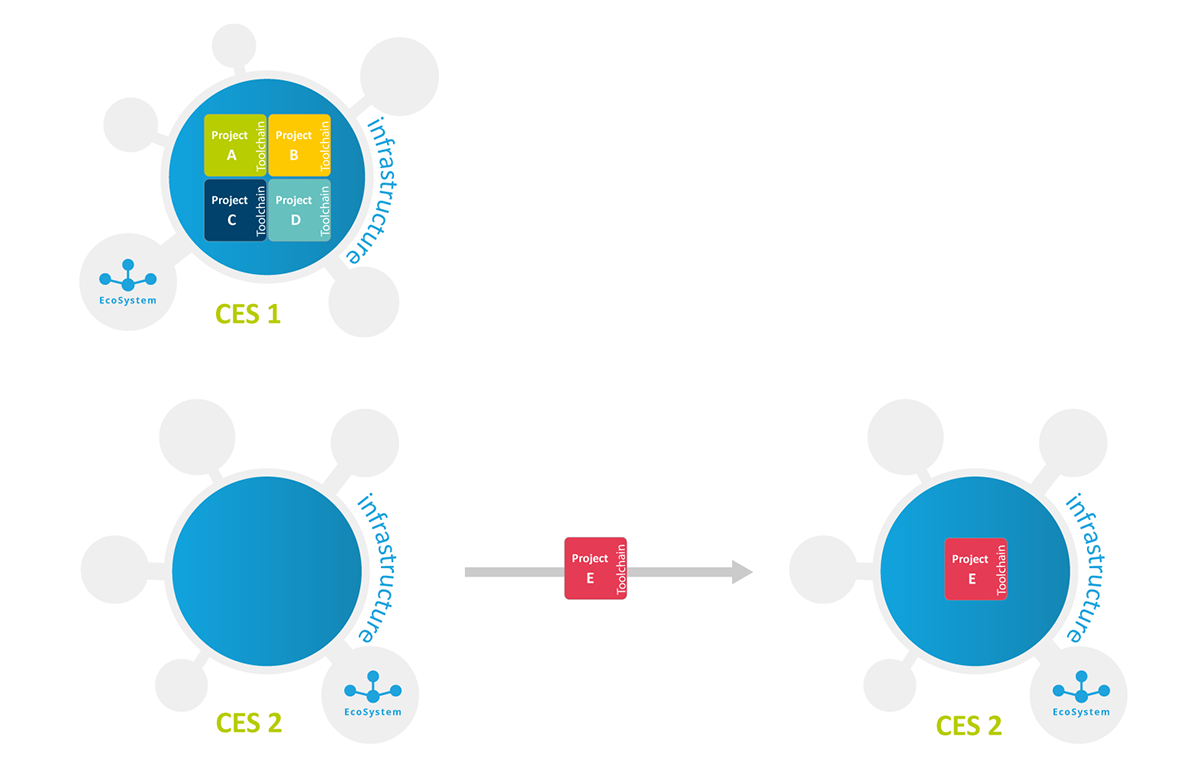
Why operating multiple Cloudogu EcoSystem instances can make sense
One of the major arguments to use Cloudogu EcoSystem is that it is an extremely efficient way to operate an infrastructure for software development and the fact that it can easily be extended by additional applications. This extendibility ensures flexibility in the selection of applications while standardizing processes. Thanks to this, the Cloudogu EcoSystem is suited to be used for several projects with individual workflows at the same time. Nevertheless, there are scenarios where it might make sense to separate projects into individual instances of the Cloudogu EcoSystem. In this post we will explain these scenarios.
Cloudogu EcoSystem quickstart guide

Reasons for multiple instances
If you have many, very different projects, that are being developed by separate teams that all have individual preferences and requirements towards the infrastructure, you might want to use a large number of different tools and plugins. That can lead to a high complexity for administrators if they want to satisfy all those requirements within one monolithic infrastructure, simply because of the complexity within the applications. In these situations it could make sense to operate Cloudogu EcoSystem instances for different projects. This way it is not necessary to create a “jack of all trades device” infrastructure. Instead, one operates independent instances. Hence, the separation of instances could make sense in these cases:
- If you have several highly specialized teams that work on different projects.
- If you have projects that have very distinct requirements towards the infrastructure. This could for example be the case for legacy projects that might require older versions of tools and you don’t want to migrate it to newer infrastructure. “Never change a running system!”
- If you have projects that you want to archive after completion, but that you might need to reactivate quickly to fix bugs or to meet statutory provisions.
- If you have clients that have specific requirements, or that even demand that their projects are being developed on separate infrastructure (multi-client-capability).
How to separate instances
If you’re already using an EcoSystem and you want to migrate a projects into a separate instance, you could for example clone your existing instance and then adapt both instances afterwards. The only thing you would have to do is to delete the migrated project from the original instance and delete all projects but the migrated one from the cloned instance. The important thing is to create a complete clone; otherwise you could run into problems deleting projects.
If you already know that you want a project to be operated on an individual instance before it was started, you can simply set up a new instance from scratch.
Advantages of the operation of multiple instances
General
- Easy adaptation to requirements by projects, teams and clients, because there are fewer interdependencies that need to be considered.
- Individual speed for upgrades of plugins and applications.
- Coordination of maintenance windows is easier, because instances can be maintained individually.
- Simple archiving and reactivation of projects as a whole.
Portability
If you are developing software for a client on a separate Cloudogu EcoSystem instance, you can even take it one step further and offer to the client to hand over the complete infrastructure that was used for the development of the application. At first that might seem odd, but this offer could strengthen the trust and improve the climate for the whole project.
 Graphic resource: © Pikisuperstar – freepik.com
Graphic resource: © Pikisuperstar – freepik.com
Scenarios for the operation of multiple Cloudogu EcoSystem instances
Depending on how large your organization is, how many projects you’re working on simultaniously and how diverse the requirements of clients are, it could be beneficial to operate multiple instances of the Cloudogu EcoSystem parallel. The scenarios that we presented in this post are based on our own experiences as well as on experiences, requirements and wishes of our clients that are already using at least one Cloudogu EcoSystem. Don’t hesitate to contact us if you have any questions or comments. Simply shoot us an email, or contact us via social media or through the Cloudogu EcoSystem Google Group.
Cloudogu EcoSystem
Convince yourself of the advantages of the Cloudogu Ecosystem. Use the modern DevOps platform now for free.
Learn more about it





